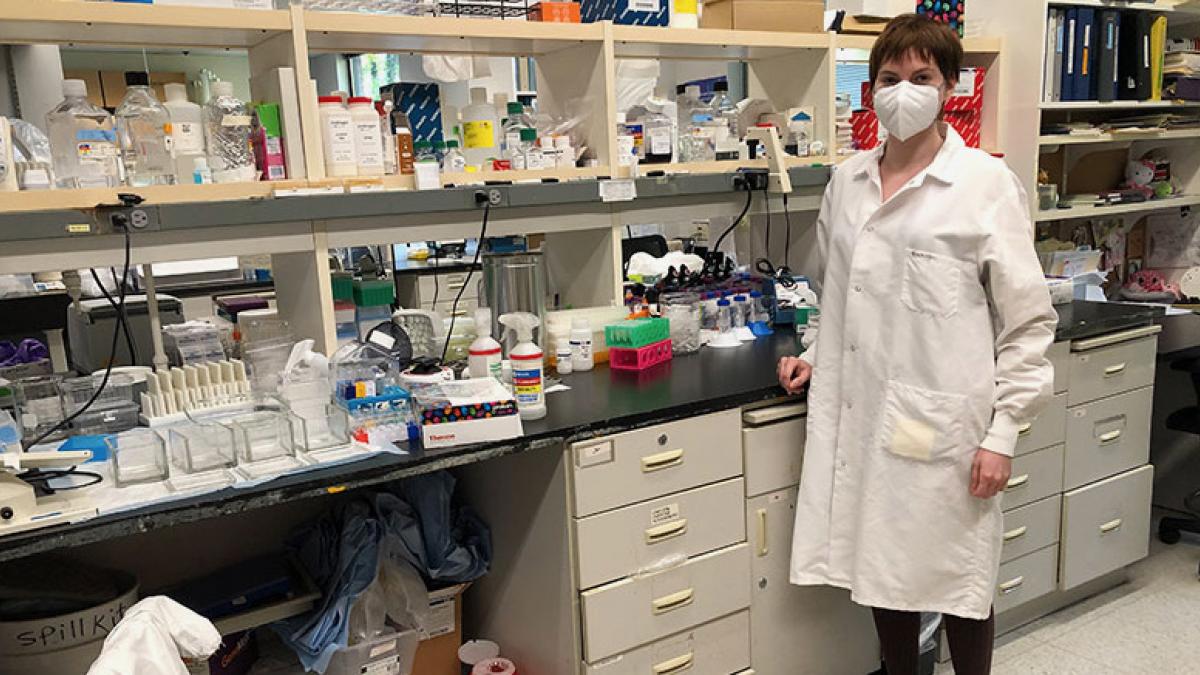
New work by Jacqueline Garrick and her colleagues on Project 3 sheds light on the function of Paraoxonase 2 in the brain.
Paraoxonase 2 (PON2) could play an important role in reducing the health impacts of toxicants. For this reason, the antioxidant enzyme has interested toxicologists for decades, yet its function in the body still remains mostly mysterious. Now new research by Jacqueline Garrick and her colleagues on UW SRP Project 3 sheds some light on the mystery by showing that a deficiency in PON2 leads to sex-specific changes in brain gene expression and function, with direct impacts on motor function.
PON2 is the oldest PON of the paraoxonase family- a set of three enzymes (PON1, PON2 and PON3) known for their powerful antioxidant properties and abilities to mitigate the harmful effects of toxicant exposure on the body.
While both PON1 and PON3 circulate in the plasma, PON2 is found only inside cells and primarily along inner mitochondrial membranes. Mitochondrial membranes are an important site of reactive oxygen species (ROS) production, and thus an important target for antioxidants to reduce cellular damage from ROS. High levels of ROS have been associated with conditions such as cardiovascular disease, cancer, diabetes and neurodegenerative diseases. Oxidative stress is a primary mechanism by which neurotoxicants exert their toxicity.
While PON1 and PON3 are found mostly in the liver, PON2 has been found in every organ examined, with the highest levels found in the lung, liver, intestines, heart, brain, and kidneys respectively. PON2 is expressed differently in different cell types, but universally appears to play a role as an antioxidant.
Given PON2's ability to counteract the oxidative stress created by neurotoxicants and its expression in the brain, Garrick and her team wanted to understand better what effect PON2 deficiency would have. This question is of particular interest given that some individuals are known to have genetic variations that result in reduced PON2 activity levels, mimicking PON2 deficiency. That means that understanding the physiological consequences of this condition will have important implications for public health.
Garrick and her colleagues conducted their experiments with a strain of PON2 deficient mice and wild-type mice controls. They evaluated differences in behavior and motor function between the two strains in multiple ways. First, they recorded behavior in a "home cage," quantifying how much time was spent in different zones such as the arena center, the arena periphery, the water bottle and the hidden shelter. Second, they evaluated gait by having the mice walk on a "catwalk" (the Noldus CatWalk XT system) and assessing variables like speed, coordination and the spatial patterns of pawprints. Finally, they tested mice on a spinning rod (rotarod), recording how long it took each mouse to fall off.

Some of the most significant findings from the behavioral tests were that PON2 deficient mice spent more time in the center of their arenas rather than in their hidden shelter and were more active at night, suggesting reduced anxiety. They also fell off the rotarod more quickly, suggesting impaired motor function.
Garrick and her team also looked at gene expression in the cerebral cortex, striatum and cerebellum of mice used in behavioral tests. They found differences in expression that were specific to sex and to brain region. Taken together, these results suggest that PON2 deficiency significantly affects sex-specific expression patterns and reduces sex differences in gene transcription in the brain. This finding has important implications for toxicology, as the health effects of exposure to toxicants is known to vary between the sexes.

Pathway analysis of the changes in gene expression in PON2 mice revealed some interesting patterns with public health implications. Surprisingly, PON2 deficiency was not associated with oxidative stress pathways, despite the fact that PON2 deficiency has been reported to increase oxidative stress in multiple systems by other research teams.
Pathway analysis did suggest that PON2 deficiency may make individuals more sensitive to the effects of exposure to specific compounds like Aflatoxin B1 and dibutyl phthalate. These toxic compounds can be found all around the world, meaning that increased sensitivity in individuals with low PON2 activity could have important public health implications.
PON2 deficiency was also linked to other pathway changes that are associated with conditions such as insulin dysregulation and cancer.
In some ways, the findings raise more questions than they answer. But they tell a piece of a story that's interesting and important, and suggest new directions to pursue.
Garrick JM, Cole TB, Bammler TK, MacDonald JW, Marsillach J, Furlong CE, Costa LG. Paraoxonase 2 deficiency in mice alters motor behavior and causes region-specific transcript changes in the brain. Neurotoxicol Teratol. 2021 Sep-Oct;87:107010. doi: 10.1016/j.ntt.2021.107010. Epub 2021 Jul 1. PMID: 34216730; PMCID: PMC8440460.

